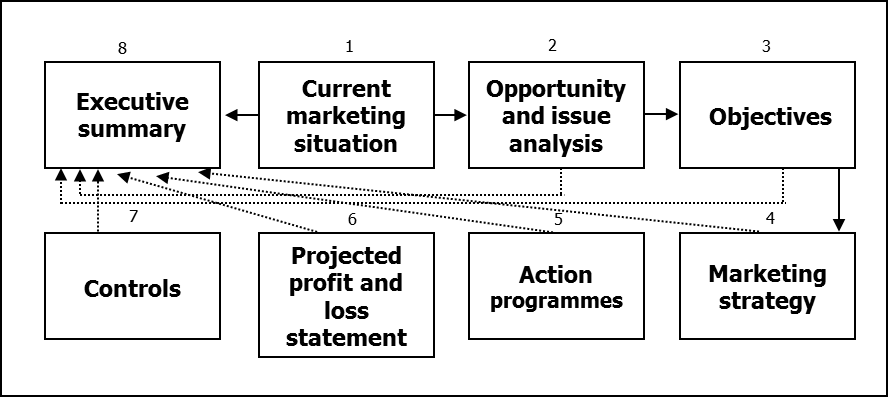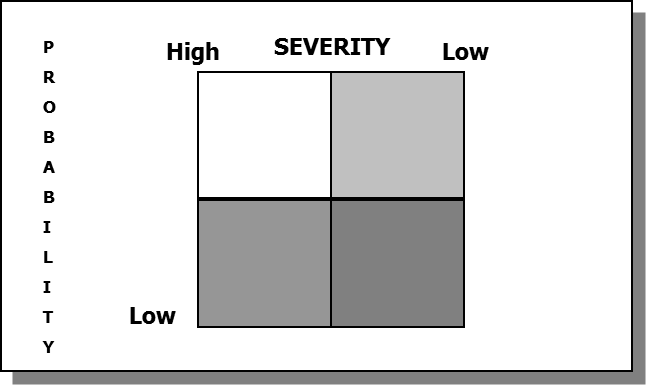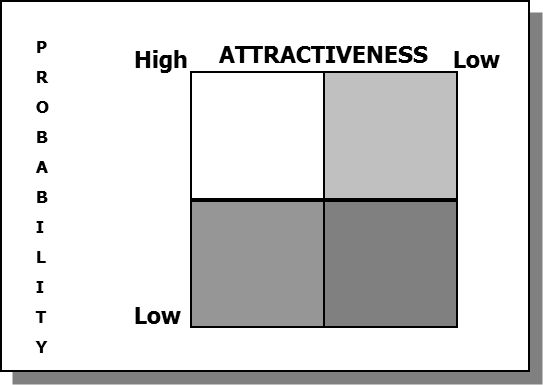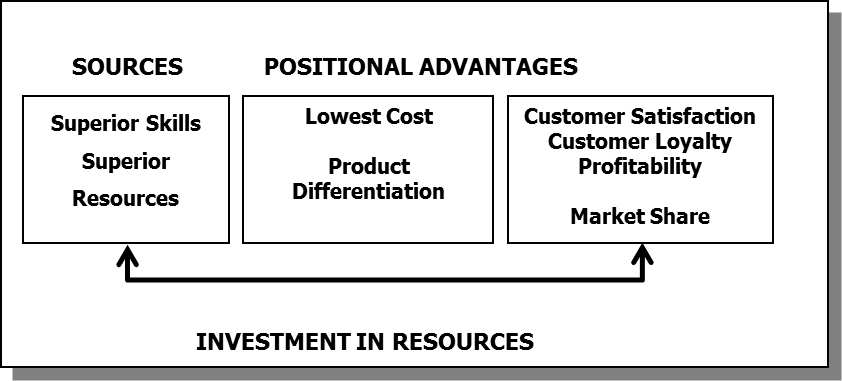This process of strategic market planning precedes the development of marketing strategy such as that outlined in the early chapters of this text. Stated broadly, marketing strategy consists of decisions in three areas.
Target markets must be selected, which will be the focus of the organisation’s marketing activities. This selection requires a process of market segmentation.
The needs of the target markets chosen must be catered for by the development of a marketing mix for each of the target markets. The organization needs to make decisions regarding the product or service, price, marketing communication and distribution and how each of these four elements of the marketing mix will contribute toward the attainment of marketing goals.
Finally, whether or not it is conscious of this, any organization will be perceived as being something or occupy some position in the market’s mind. it is better that the organization develops a well-considered positioning strategy in which it states how it wishes to be perceived and is delineated and meaningful points of difference between itself and its competitors are defined.
Contents of the Marketing Plan
|
Section |
What it is |
|
1. Executive summary |
An abbreviated summary of the main thrusts of the plan for management overview. |
|
2. Current marketing situation |
Relevant background data on the market itself, the product, distribution, competition and the broader environment – “What’s happening?” |
|
3. Opportunity and issue analysis |
The strengths and weaknesses of the firm; the opportunities and threats facing it; the key issues that the plan must cope with. |
|
4. Objectives |
What the plan wants to reach, e.g. sales volume, market share, ROI. |
|
5. Marketing strategy |
Who the target markets will be; what the blend of marketing mix elements (the 4 Ps) to reach them will be. |
|
6. Action programmes |
What will be done? Who will do it? When will it be done? How much will it cost |
|
7. Projected profit and loss statement |
Summarises the potential financial payoff from the plan. |
|
8. Controls |
How will the plan be supervised? |

1. Executive Summary
The written plan should begin with a short summary of the main thrusts, goals and recommendations to be found in the actual plan. This permits top management to gain rapid insight into the plan without first having to read the whole document. The summary should, of course, include a table of contents.
2. Current Marketing Situation
The current marketing situation section requires a situational analysis that considers the current market situation, the product situation and the competitive situation and various other variables.
Market Situation
This section provides data on the current market situation. The size of and trends in the market are shown in total and by segments. Data on customer needs, perceptions and behaviour may be presented.
Product Situation
In this part of the plan, sales, prices, contribution margins and net profits are shown for several past years. The availability of computer spread sheets such as Excel has greatly facilitated the manager’s task in this regard. Not only is the preparation and display of topical data made that much easier, but projections, graphics and sensitivity analysis of future data can be achieved.
Competitive Situation
Major competitors are identified and their postures in terms of size, product quality, market share and strategies described.
Distribution Situation
This section presents data on the volume of products sold through each distribution channel, changes in the distribution situation and the motivation of intermediaries.
3. Macro Environment Situation
This section of the plan describes broad macro environmental trends that may have a bearing on the product – trends in the political, legal, economic sociocultural and technological environment.
Swot Analysis
The analysis of the current marketing situation provides the basis of data for a SWOT analysis.
Strengths and Weaknesses
Strengths and weaknesses are internal factors that the manager should identify. Strengths may be capitalized on, while weaknesses point to areas which the plan should correct the resource audit below allows one to do this.
Assess each of the following aspects of the organisation’s resources. Do you believe it represents strength to the company (i.e. the company is in a better position than its competitors do) or a weakness (i.e. the company is in a worse position than its competitors do)?
Click here to download a handout with an example of a SWOT analysis grid to analyse resource strength.
The resource audit-form is a very useful tool for a group of planners to use in assessing an organisation’s strengths and weaknesses. Obviously, the one shown in the example would not be suitable for all organizations
Environmental Analysis (Analysis of Opportunities and Threats)
Opportunities and threats refer to outside factors that can affect the future of business and over which it has not control. Opportunities are observed trends or possible trends in the environment which are attractive to the firm.
Threats are observed or possible trends in the environment that could be detrimental to the firm. Failure to identify opportunities and threats can lead to stagnation.
Many organizations are able to identify threats in the environment but then ignore them. The threat matrix offers a simple but powerful way of classifying and managing threats. To use it, the planning team simply needs to consider each of the threats identified and place them on the grid in the appropriate cell, evaluating each threat, in term of its severity and probability of occurrence.
A serious threat is one that, if it materialized, could seriously hurt the company. If in addition it were highly likely to occur, it would be placed in the upper left quadrant. It would have to be managed constantly and contingency plans would probably be developed. A threat with low likelihood or not a very serious threat, placed in the bottom right cell, could even be ignored. Threats in the other two quadrants could be monitored in terms of their movement along the axes.
Just as a planning team needs to consider the threats facing it, so too it must develop some facility of identifying, classifying and managing opportunities. An opportunity matrix can be used in very much the same way as a threat matrix. Attractive, probable opportunities should be managed and exploited; less attractive, less likely ones ignored; and opportunities in the bottom left to top right diagonal monitored for shifts in position. An opportunity matrix is illustrated opposite.


Competitive Analysis
Any appraisal of the strategic and marketing situation must include an analysis of the competitive situation. To often, unfortunately, managers and academics alike misuse the term’ competitive advantage’. The cliché has been used and abused to the extent that its true meaning has become unclear. An excellent, simple model for understanding exactly what competitive advantage is and where it comes from is illustrated below.

Briefly what the process model tells us is:
Organisations have only two sources of competitive advantage. They either have superior skills (knowledge; ability; know-how) or they have superior resources (more money, more and better people, better plans, better facilities, better location, better information technology). Really fortunate organizations have both. These sources of competitive advantage are used to gain a position of advantage. This positional advantage can either be the ability to be the lowest cost producer or the ability to offer superior customer value. The ability to be the lowest cost producer means that the organisation can command a pricing advantage (sell at a lower price than competitors while making similar or higher price margins).
Alternatively, the company can sell at the same price as competitors and command higher margins. If the organization cannot command a position of lower cost, it must compete on the basis of offering superior customer value. It must differentiate its product to the market in such a way that customers demand that product in particular and may even pay more for it. This differentiation may take the form of better quality, more features, better service, longer warranty, bigger range, added convenience – whatever it is, it is something that makes the company’s product different from that of its competitors.
If the organization does command a positional advantage, a number of things will result, all of which should be important to management. The company will have customers who are so satisfied that they will support the company loyally. In addition, the company will be profitable, and will maintain and even increase its share in the market. Theoretically, the financial results of competitive advantage are then ploughed back into what created the competitive advantage in the first place: superior skills and/or superior resources.
Most organizations give more attention to outcomes such as market share and profitability, than satisfaction and loyalty. The reason appears flawed when one considers that profitability and market share are transitory measures, taken at a point in time. Financial statements, for example, are really a company’s history and say little of its strategic future. Measures of satisfaction and loyalty are undoubtedly more effective indicators of strategic health.
4. Objectives
At this stage in the plan the objectives must be outlined. Having defined where it is, the business must specify where it wants to go. An objective must be:
- Measurable
- Time-constrained; and
- Should allocate responsibility.
A marketing plan will probably include both financial and marketing objectives.
5. Marketing Strategy
Having stated where the firm is and where it wants to go, the marketing plan should state how it is going to get there. The problems confronting most marketing planners are how to integrate marketing mix elements into the marketing planning process.
Integrating marketing mix elements into the marketing planning process. When writing a marketing plan, managers are often not sure exactly what to ’say’ about the various marketing mix elements in the written marketing plan. We will attempt to highlight the important issues in the written marketing plan by discussing each mix element briefly, and then referring to a set of questions on the mix element. Answer these questions carefully and you will find that you have a lot of the body of the marketing strategy section of your marketing plan.
Product Plan
The strategy which an organization adopts towards its product or service is the most important factor in its long-term success, but continued success will also depend on the ability to adjust to changes in the marketplace.
Products make profits for an organization by effectively providing customers with the benefits they seek, within carefully controlled cost and revenue parameters. Here the concept of the product life cycle is useful, for it can be used to assess just where a product is in terms of growth, maturity or decline. This allows for the development of appropriate marketing strategies.
Decisions on product-market strategy should aim to maintain a product portfolio with a balance of growth products, mature products and declining products. This will provide a sound base on which to plan for future development, particularly the development of new products.
Distribution Plan
The outlets available determine where customers buy products or services. Distribution planning should be based on a careful assessment of the market requirements and the ability of the organization to meet them. The marketing channel through which products or services move is a network of institutions which themselves are linked by a series of mutually beneficial relationships.
The marketing channel itself is dynamic, as are the markets it serves. Decisions regarding the choice of channel should be seen as an integral part of the organisation’s marketing strategy, subject to adjustment in the light of circumstances.
Getting the product or service to the customer cannot be viewed by marketing management as the concern of others. The distribution activity of the organization is as much a part of its marketing mix as are pricing, promotion and product decisions. The key to the successful development of the organisation’s distribution is the adoption of a total systems approach, in which an integrative view is taken of the various activities involved in distribution.
The output of such an integrated system is customer service. The task implicit in the management of customer service is to achieve a balance between the cost of service and direct customer benefits. The appropriate level of availability, which is the principle component of customer service, depends not only on profitability, but also on the product market competition and the channels used.
Five areas, namely facilities, inventory, transport, communications and unitisation, constitute the total cost of distribution within an organization.
Four basic sets of objectives in a distribution plan:
- Objectives related to outlet penetration.
- Objectives related to inventory.
- Objectives related to distributor sales and promotional activities.
- Objectives related to customer-development programmes (e.g. incentives for distributors).
Pricing Plan
Pricing decisions are the most important part of marketing strategy. The price should always be related to the achievement of corporate and marketing objectives. The role of price must be established in relation to such factors as the product life cycle; the requirements of the total product portfolio and sales and market share objectives.
The methods used to achieve these goals are as dependent on the market and competitive circumstances as they are on costs. Indeed, the market-orientated approach to pricing sees costs as a constraint which may determine a lower limit to price, rather than as a basis from which price is determined.
Getting the price right has a direct effect on revenue and profits. The price of a product determines the profit margin, that is, the difference between the cost of producing an item and the price at which it is sold. But price also affects the quantity of product sold, since a higher price may reduce demand, while a lower price can lead to increased sales. The margins given to intermediaries in the marketing channel should be viewed in terms of the value added by them.
In return for various functions necessary to the completion of the exchange process, the organization will be willing to share some of the total channel margin available to it. The various types of margins commonly encountered are trade, quantity, promotional and cash discounts.
The price of a product depends on costs, on its perceived value and on the method of distribution. Pricing should never be done in isolation from other products.
Communication Plan/Advertising and Promotion Plan
Communication with customers can be personal or impersonal. A salesperson’s call is an example of the personal approach; a mass advertising campaign is an example of the impersonal approach. The mix between the two is known as the communications mix.
In the case of advertising, a vital element in devising persuasive appeals is an understanding of how purchase decisions are reached. The process of persuasion can be analysed as a series of steps which a potential customer climbs, covering awareness, interest, attitude formation and the decision to act. If an organization’s offer has been correctly matched with customer needs, the customer should be persuaded to want the organisation’s particular offer in preference to any other. This can often be accomplished by developing a psychologically unique appeal for the product or service (possibly through branding), correctly judging the price and making the product or service available in a convenient way.
Managers can also utilize sales promotions. These must be used with precisely the same attention to objectives, testing and evaluation as in advertising. The cost effectiveness of any sales promotion must be established, and it must be integrated into the overall marketing plan. Sales promotions can be undertaken as a marketing tactic for any of the 4 Ps.
Finally, the manager must plan for the integration of information technology into marketing strategy, particularly as an aid to communication. Managers should learn to take advantage of new media such as the Internet, Social Media and the World Wide Web.
Personal selling is often neglected by marketing management, yet personal selling is a crucial part of the marketing process and must be managed as carefully as any other aspect. Personal selling can be seen as a component element of the communication mix. A decision as to the role of personal selling in this mix can only emerge from an organisation’s thorough understanding of the buying process which operates in its markets.
In industrial marketing, personal selling has a number of advantages over other forms of marketing communication. There are three basic issues that must be resolved if the number of sales forces is to operate efficiently.
The first issue concerns the number of salespeople needed. The organization should firstly establish the present pattern of work and then consider alternative ways of undertaking the tasks performed by salespeople. The next stage is to analyse the desired workload for each salesperson and determine how the work, once measured, can best be allocated in terms of territory and time.
The second issue is concerned with the objectives of the job of the salesperson. Sales objectives can be either quantitative or qualitative. Quantitative objectives are mainly concerned with what the salesperson sells, to whom he or she sell it and at what cost. Qualitative objectives are related to the salesperson’s performance on the job.
The third issue is overall management of the sales force. Supportive modes of management are superior to repressive modes.
Click here to download a handout that with a list of questions to assist in compiling each component of the marketing strategy component of your plan.
6. Action Programme
While the strategy statement represents the broad thrust that the marketing manager will use to achieve his or her objectives, each element of the strategy must answer the following question:
- What will be done?
- When will it be done?
- Who will do it?
- How much will it cost?
7. Projected Profit and Loss
The action plans should allow the manager to assemble a supporting budget that is actually a projected profit and loss statement. On the revenue side, it shows forecasted sales, both in units and Rands, at an average price. The expense side shows production costs, physical distribution and marketing cost, and these can be broken down into further categories. The difference is projected profit.
Once approved, the budget becomes the basis for developing material procurement plans and schedules, production schedules, recruitment plans and marketing operations.
8. Controls
The budget sets standards that should be achieved. A comparison of these standards with the actual results achieved and the taking of corrective action, are essential parts of the control process. This last section of the plan outlines the control procedures to be applied to monitor the plan’s progress.
The possibility of contingency plans should also be considered. A contingency plan outlines how the main plan will change if certain unexpected events occur, such as major competitor price changes. The purpose of contingency planning is to encourage managers to give prior thought to some difficulties that might be ahead.
Click here to download a handout with an example of the marketing plan design applied to a business.